Butterflies and Moths
Media
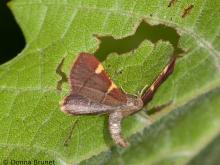
Species Types
Scientific Name
More than 680 species in North America north of Mexico
Description
The pyralids are a large and diverse family of mostly small or medium-sized moths. They often look like they have snouts.
Media
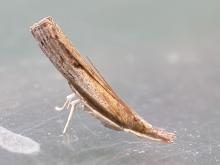
Species Types
Scientific Name
More than 860 species in North America north of Mexico
Description
Crambid snout moths are named for the mouthparts that project outward like a snout. They are very similar to the closely related family of pyralid moths.
Media

Species Types
Scientific Name
Amphion floridensis
Description
The Nessus sphinx is a common Missouri moth. It hovers near flowers, collecting nectar, during the day and at dusk. The caterpillars eat plants in the grape family, including Virginia creeper.
Media
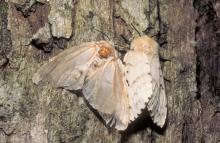
Species Types
Scientific Name
Lymantria dispar
Description
The spongy moth, introduced to our continent from Europe, has caused millions of dollars in damages to forests. Help protect our forests by learning how to recognize the spongy moth, and its larvae and egg masses, and report any occurrences you find.
Media
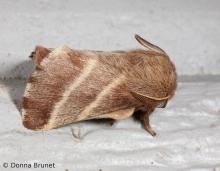
Species Types
Scientific Name
About 35 species in North America north of Mexico
Description
Tent caterpillar moths and lappet moths are medium-sized, with thick, long scales that make them look furry. The abdomen usually extends past the wings when they are folded back over the body.
Media

Species Types
Scientific Name
About 1,400 species in North America north of Mexico
Description
At rest, tortricid moths often have a distinctive shape, resembling an arrowhead or a bell, with the forewing tips either squared-off or flared outward.
Media

Species Types
Scientific Name
Hyphantria cunea
Description
Fall webworm moths may be either completely white or have varying amounts of dark spots. The larvae are hairy caterpillars that live communally in late summer and fall in tentlike webs on the branch tips of trees.
Media

Species Types
Scientific Name
Subfamily Herminiinae
Description
Litter moths are a subfamily of rather nondescript brownish moths, often with intricate patterns that camouflage them as they rest on tree bark or among leaves on the forest floor.
Media

Species Types
Scientific Name
Hypercompe scribonia (syn. Ecpantheria scribonia)
Description
The giant leopard moth is a beautiful large white moth. The forewings have numerous black spots, many with hollow centers. Some of the dark markings are iridescent blue in the light.
Media
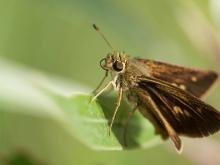
Species Types
Scientific Name
About 275 species in North America north of Mexico
Description
At first glance, skippers look halfway between butterflies and moths. They are commonly seen darting among the flowers they visit on hot summer days.
See Also


Media

Species Types
Scientific Name
About 1,500 species in North America north of Mexico
Description
Adult caddisflies are mothlike. Their larvae are aquatic and build portable, protective cases out of local materials, including grains of sand, bits of leaves and twigs, and other debris.
Media

Species Types
Scientific Name
Corydalus cornutus
Description
Adult eastern dobsonflies are huge and mothlike, with large wings and a weak, fluttery flight. The fiercely predaceous aquatic larvae, called hellgrammites, are well-known to anglers, who often use them as bait.
About Butterflies and Moths in Missouri
Butterflies, skippers, and moths belong to an insect order called the Lepidoptera — the "scale-winged" insects. These living jewels have tiny, overlapping scales that cover their wings like shingles. The scales, whether muted or colorful, seem dusty if they rub off on your fingers. Many butterflies and moths are associated with particular types of food plants, which their caterpillars must eat in order to survive.





















